
The Enchanting Port of Nice: A Seaside Gem
Discover the Port of Nice: a captivating blend of French Riviera charm and maritime allure, perfect for history buffs, foodies, and leisure seekers.
Nestled along the sparkling Mediterranean Sea, the Port of Nice is a captivating blend of French Riviera charm and maritime allure. This historic port, known as the Lympia Harbor, offers visitors a glimpse into the vibrant life of the Côte d'Azur with its colorful buildings, bustling quays, and picturesque views. Stroll along the Quai des États-Unis and the Quai Lunel to take in the stunning vistas of luxury yachts and traditional fishing boats bobbing gently on the azure waters. The port is surrounded by a lively array of cafes, restaurants, and boutiques, making it the perfect spot to savor local cuisine or indulge in some retail therapy. Don't miss the opportunity to sample fresh seafood at one of the many waterfront eateries, where you can dine with a view of the sea. For history enthusiasts, the Port of Nice is brimming with cultural landmarks. Visit the Church of Notre-Dame du Port, a beautiful 19th-century structure that stands as a testament to the area's rich heritage. The nearby Garibaldi Square, with its stunning baroque architecture, offers a charming atmosphere and a glimpse into the history of Nice. Whether you're keen on exploring the harbor's vibrant nightlife, enjoying a leisurely boat tour, or simply soaking up the sun by the sea, the Port of Nice offers a delightful experience for every traveler. Its unique blend of natural beauty, historical significance, and modern amenities ensures that your visit will be both memorable and enchanting.
Local tips in Port of Nice
- Visit early in the morning to catch the fishermen bringing in their fresh catch.
- Wear comfortable shoes as the cobblestone streets can be uneven.
- Take a boat tour for a unique perspective of the coastline and the city.
- Try local specialties like Socca at nearby eateries.
- Check the schedule for local festivals and events happening at the port.
The Enchanting Port of Nice: A Seaside Gem
Nestled along the sparkling Mediterranean Sea, the Port of Nice is a captivating blend of French Riviera charm and maritime allure. This historic port, known as the Lympia Harbor, offers visitors a glimpse into the vibrant life of the Côte d'Azur with its colorful buildings, bustling quays, and picturesque views. Stroll along the Quai des États-Unis and the Quai Lunel to take in the stunning vistas of luxury yachts and traditional fishing boats bobbing gently on the azure waters. The port is surrounded by a lively array of cafes, restaurants, and boutiques, making it the perfect spot to savor local cuisine or indulge in some retail therapy. Don't miss the opportunity to sample fresh seafood at one of the many waterfront eateries, where you can dine with a view of the sea. For history enthusiasts, the Port of Nice is brimming with cultural landmarks. Visit the Church of Notre-Dame du Port, a beautiful 19th-century structure that stands as a testament to the area's rich heritage. The nearby Garibaldi Square, with its stunning baroque architecture, offers a charming atmosphere and a glimpse into the history of Nice. Whether you're keen on exploring the harbor's vibrant nightlife, enjoying a leisurely boat tour, or simply soaking up the sun by the sea, the Port of Nice offers a delightful experience for every traveler. Its unique blend of natural beauty, historical significance, and modern amenities ensures that your visit will be both memorable and enchanting.
Iconic landmarks you can’t miss
Colline du Château
Discover the breathtaking views and rich history of Colline du Château, a must-visit park in Nice, France, blending nature and culture.

Nice Port
Explore Nice Port – a vibrant marina offering stunning views, fresh seafood, and a charming blend of local culture on the French Riviera.

Place Giuseppe Garibaldi
Discover the vibrant charm of Place Giuseppe Garibaldi in Nice, where history, culture, and local life converge in a stunning square.

Waterfall
Discover the serene beauty of Nice's Waterfall, a stunning natural attraction surrounded by lush gardens and breathtaking city views.

Nice Harbour
Explore the picturesque Nice Harbour, a vibrant Mediterranean destination full of stunning views, delicious dining, and unforgettable experiences.

Bellanda Tower
Discover the stunning views of Nice from Bellanda Tower, a historic observation deck that offers breathtaking panoramas of the Mediterranean coastline.
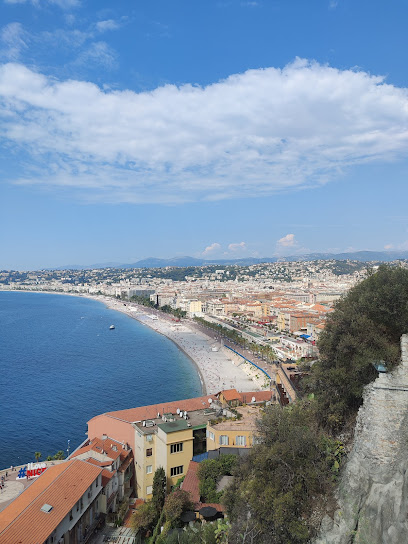
Monument to the Dead of Rauba-Capeu
Explore the Monument to the Dead of Rauba-Capeu, a stunning war memorial in Nice, blending history with breathtaking Mediterranean views.

Phare de Nice
Discover the stunning Phare de Nice, a historic lighthouse offering breathtaking views of the Mediterranean and a glimpse into the maritime heritage of the French Riviera.

Viewpoint
Experience breathtaking views of Nice and the Mediterranean at this stunning viewpoint, a must-visit for travelers seeking natural beauty and tranquility.
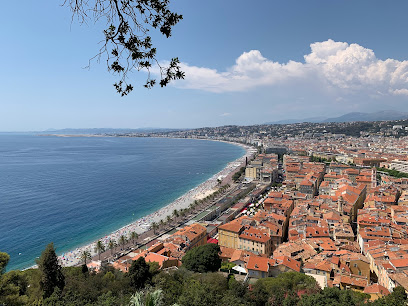
La statue - Un Dimanche à Nice de S.Cipre
Experience the enchanting La statue - Un Dimanche à Nice, a stunning sculpture that celebrates the artistic spirit and vibrant culture of this beautiful city.

Unmissable attractions to see
Promenade du Paillon
Explore the enchanting Promenade du Paillon, a lush urban park in Nice filled with artistic fountains, sculptures, and peaceful gardens.

Place Giuseppe Garibaldi
Discover the vibrant charm of Place Giuseppe Garibaldi, a historic square in Nice filled with stunning architecture, lively cafes, and beautiful fountains.

Musée du Palais Lascaris
Explore the Baroque beauty and musical treasures at Musée du Palais Lascaris, a cultural highlight in the heart of Nice, France.

Waterfall
Discover the serene beauty of Nice's stunning waterfall, surrounded by lush gardens and breathtaking views of the city.

Phare de Nice
Discover the Phare de Nice, a stunning lighthouse that offers breathtaking views of the Mediterranean and a glimpse into Nice's rich maritime heritage.

Panorama Est de la Colline du Château
Discover stunning views and rich history at Panorama Est de la Colline du Château in Nice, the perfect viewpoint for capturing picturesque landscapes.

Tour Saint-François
Explore the captivating Tour Saint-François in Nice, a historic tower offering stunning views and a glimpse into the city's rich past.

Tour de l'Horloge
Discover the stunning history and vibrant atmosphere around the iconic Tour de l'Horloge in the heart of Nice, France.
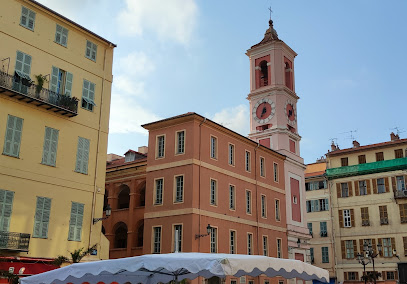
La statue - Un Dimanche à Nice de S.Cipre
Explore La statue - Un Dimanche à Nice, a stunning sculpture by S. Cipre, reflecting the vibrant artistic spirit of this beautiful Mediterranean city.
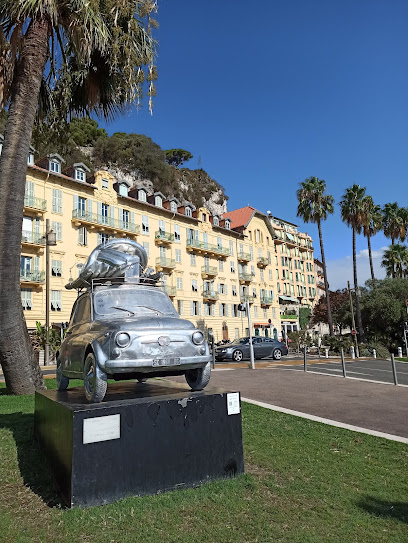
Essential places to dine
La Vigna
Experience Mediterranean flavors at La Vigna in Nice—where fresh ingredients meet stunning views for an unforgettable dining experience.
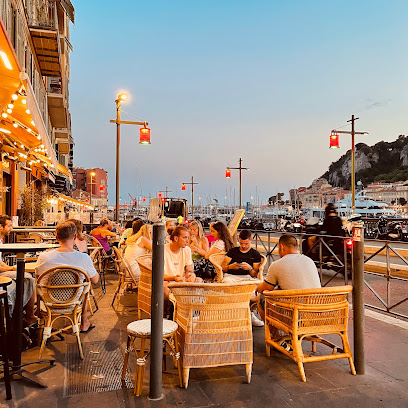
Restaurant Le Lunel
Discover the exquisite blend of French and Mediterranean flavors at Restaurant Le Lunel in Nice - a culinary gem by the sea.

Le Bistrot du Port
Discover the essence of French gastronomy at Le Bistrot du Port in Nice—where tradition meets breathtaking views.

Les Pêcheurs
Experience authentic seafood dining at Les Pêcheurs in Nice, where Mediterranean flavors meet stunning dockside views.

Maison F Restaurant
Experience exquisite French dining at Maison F Restaurant in Nice, where local flavors meet stunning waterfront views for an unforgettable culinary journey.

L'Ane Rouge
Experience exquisite French cuisine at L'Ane Rouge in Nice - where seafood meets haute gastronomy along the beautiful Mediterranean coast.

Le Pass'Port Nice
Experience authentic French cuisine and delightful crepes at Le Pass'Port Nice in beautiful Nice.

La Goélette
Experience authentic French-Mediterranean cuisine at La Goélette in Nice, known for its gourmet pizzas and stunning waterfront views.

Chez Clara
Experience exquisite French cuisine at Chez Clara, where culinary artistry meets breathtaking views in beautiful Nice.

La Table Marine
Experience exquisite Mediterranean cuisine at La Table Marine in Nice, where stunning sea views meet culinary excellence.
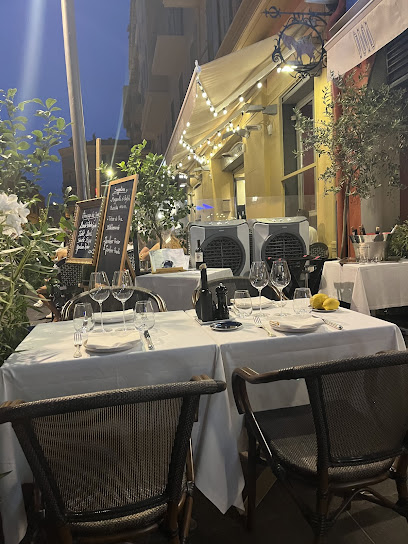
Markets, malls and hidden boutiques
Galeries Lafayette Nice Masséna
Discover the ultimate shopping experience at Galeries Lafayette Nice Masséna, where luxury meets style in the heart of Nice.

Trésors Publics - Boutique
Explore Trésors Publics, the premier gift shop in Nice, offering unique artisan souvenirs and local treasures that embody the spirit of the French Riviera.

Saint James
Discover the essence of French fashion at Saint James in Nice, offering stylish clothing for men, women, and children in an inviting atmosphere.
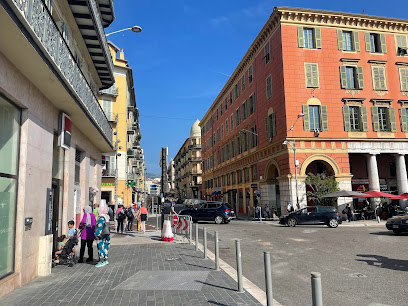
Mon Oeil
Explore the stylish collections at Mon Oeil, a must-visit women's clothing store in Nice, perfect for fashion lovers and tourists.

Au Marche De Provence
Discover unique local crafts and souvenirs at Au Marche De Provence, a charming shop in the heart of Nice showcasing the essence of the French Riviera.

Palace
Explore the luxurious Palace store in Nice, where exquisite shopping meets the charm of the French Riviera.

Hattori boutique
Discover the elegance of Hattori Boutique in Nice, where unique fashion meets the charm of the French Riviera.

L’Entrepôt Nice Luxury Outlet
Discover unbeatable deals on luxury fashion at L’Entrepôt Nice Luxury Outlet, your ultimate shopping destination in the heart of Nice, France.

La vache folle Boutique
Explore the unique women's clothing selection at La Vache Folle Boutique in Nice, where French fashion meets irresistible charm.

Frip 'n the city
Explore unique fashion at Frip 'n the City in Nice, where vintage charm meets modern style for an unforgettable shopping experience.

Essential bars & hidden hideouts
Wayne's Bar
Discover Wayne's Bar in Nice: a vibrant pub offering local drinks, a lively atmosphere, and an authentic Mediterranean experience.

Waka Bar
Experience the vibrant atmosphere at Waka Bar in Nice, where delightful cocktails and tapas await along the stunning Mediterranean coast.
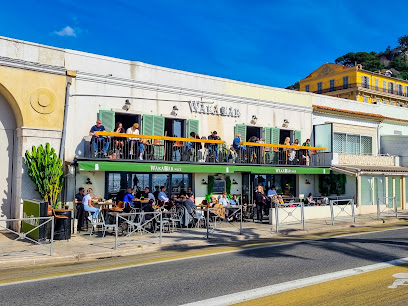
Ma Nolan's Irish Pub, Nice Port
Discover the charm of Ma Nolan's Irish Pub in Nice Port, where authentic cuisine meets live music and a vibrant atmosphere.

Boston Bar
Experience the vibrant nightlife of Nice at Boston Bar, a local favorite for craft cocktails and unforgettable evenings.

FOAM Nice, Port Lympia : Bar à Bière - Craft Beer Bars
Discover FOAM Nice, where craft beer meets a vibrant atmosphere in the heart of Port Lympia, perfect for tourists and locals alike.

BDA Bar
Discover the vibrant atmosphere and exquisite craft beers at BDA Bar in Nice - a must-visit destination for beer enthusiasts.
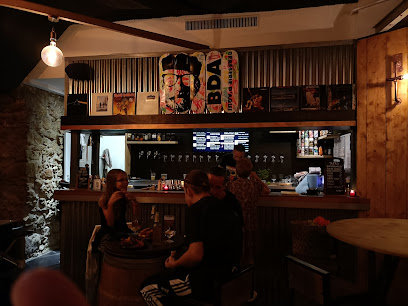
Borghese Lust
Experience the charm of Borghese Lust in Nice, where exquisite wines and delectable dishes create the perfect setting for relaxation and enjoyment.

Eden Garden
Discover the vibrant flavors of Africa in the heart of Nice at Eden Garden, a unique brasserie and cocktail bar perfect for every occasion.

Sausalito Bar Nice
Experience the vibrant nightlife of Nice at Sausalito Bar, where California meets the French Riviera in a perfect blend of flavors and fun.

Zitto Speakeasy
Experience the enchanting blend of creativity and charm at Zitto Speakeasy, Nice's hidden cocktail haven offering an unforgettable nightlife experience.

Local Phrases
-
- HelloBonjour
[bohn-zhoor] - GoodbyeAu revoir
[oh ruh-vwahr] - YesOui
[wee] - NoNon
[nohn] - Please/You're welcomeS'il vous plaît/De rien
[seel voo pleh/duh ryen] - Thank youMerci
[mehr-see] - Excuse me/SorryExcusez-moi/Désolé
[ehks-kew-zay mwah/deh-zoh-lay] - How are you?Comment ça va?
[koh-mohn sah vah] - Fine. And you?Bien. Et toi?
[byehn/eh twah] - Do you speak English?Parlez-vous anglais?
[par-lay voo ahn-glay] - I don't understandJe ne comprends pas
[zhuh nuh kohm-prahnd pah]
- HelloBonjour
-
- I'd like to see the menu, pleaseJe voudrais voir la carte, s'il vous plaît
[zhuh voo-dray vwahr lah kart, seel voo pleh] - I don't eat meatJe ne mange pas de viande
[zhuh nuh mahnj pah duh vyand] - Cheers!Santé!
[sahn-tay] - I would like to pay, pleaseJe voudrais payer, s'il vous plaît
[zhuh voo-dray pay-ay, seel voo pleh]
- I'd like to see the menu, pleaseJe voudrais voir la carte, s'il vous plaît
-
- Help!Au secours!
[oh suh-koor] - Go away!Allez-vous en!
[ah-lay vooz ahn] - Call the Police!Appelez la police!
[ah-peh-lay lah poh-lees] - Call a doctor!Appelez un médecin!
[ah-peh-lay ahn may-day-sahn] - I'm lostJe suis perdu
[zhuh swee pair-doo] - I'm illJe suis malade
[zhuh swee mah-lahd]
- Help!Au secours!
-
- I'd like to buy...Je voudrais acheter...
[zhuh voo-dray ash-tay] - I'm just lookingJe regarde juste
[zhuh ruh-gahrd zhoost] - How much is it?Combien ça coûte?
[kohn-byen sah koot] - That's too expensiveC'est trop cher
[say troh shair] - Can you lower the price?Pouvez-vous baisser le prix?
[poo-veh voo beh-say luh pree]
- I'd like to buy...Je voudrais acheter...
-
- What time is it?Quelle heure est-il?
[kehl uhr eh-teel] - It's one o'clockIl est une heure
[eel eh oon uhr] - Half past (10)Dix et demi
[dees ay duh-mee] - MorningMatin
[mah-tahn] - AfternoonAprès-midi
[ah-pray mee-dee] - EveningSoir
[swahr] - YesterdayHier
[yehr] - TodayAujourd'hui
[oh-zhoor-dwee] - TomorrowDemain
[duh-man] - 1Un
[uhn] - 2Deux
[duh] - 3Trois
[twah] - 4Quatre
[kat] - 5Cinq
[sank] - 6Six
[sees] - 7Sept
[sept] - 8Huit
[weet] - 9Neuf
[nuf] - 10Dix
[dees]
- What time is it?Quelle heure est-il?
-
- Where's a/the...?Où est un/le...?
[oo eh uh/luh] - What's the address?Quelle est l'adresse?
[kehl eh lad-rehs] - Can you show me (on the map)?Pouvez-vous me montrer (sur la carte)?
[poo-veh voo muh mohn-tray (soor lah kart)] - When's the next (bus)?Quand est le prochain (bus)?
[kahnd eh luh proh-shahn (boos)] - A ticket (to ....)Un billet (pour ....)
[uhn bee-yay (poor)]
- Where's a/the...?Où est un/le...?
History of Port of Nice
-
The Port of Nice has its roots in ancient history, originally serving as a harbor for the Greek colony of Nikaia, founded around 350 BC. The natural bay offered a strategic location for trade and defense, making it a vital asset for the settlers. This early connection to the sea laid the groundwork for Nice's maritime culture and economic development.
-
During the Roman era, the Port of Nice expanded its significance as a commercial hub. The Romans recognized its strategic importance, enhancing the port facilities to accommodate increased trade. Archaeological discoveries, such as remnants of Roman structures and artifacts, reveal the port's role in connecting the region with the broader Mediterranean trade networks.
-
In the Middle Ages, Nice's port became a crucial center for maritime trade and fishing. The city’s strategic location on the French Riviera attracted traders from various regions, contributing to its economic growth. By the 14th century, the port was instrumental in the export of local products, including olive oil and wines, further establishing Nice as a vital economic player in the region.
-
In the 17th century, the Port of Nice was fortified to protect against invasions and piracy. The construction of the Fort of Mont Alban and Fort of Saint Elmo enhanced the security of the harbor, reflecting the geopolitical tensions of the time. These fortifications are not only historical landmarks but also offer breathtaking views of the port and the surrounding coastline.
-
The 19th century marked a period of modernization for the Port of Nice, coinciding with the rise of tourism. The introduction of steamships and the expansion of the port's facilities facilitated increased passenger and cargo traffic. This transformation played a pivotal role in establishing Nice as a popular destination for European aristocrats and tourists, shaping the city's cultural landscape.
-
Throughout the 20th century, the Port of Nice continued to evolve, accommodating larger vessels and facilitating the growth of the cruise industry. The port's transformation was complemented by urban development in the surrounding areas, reflecting the broader changes in transportation and tourism. Today, the Port of Nice serves as a vibrant hub for both commercial shipping and leisure activities, embodying the city’s rich maritime heritage.
Port of Nice Essentials
-
Port of Nice is easily accessible from other neighborhoods in Nice. You can take tram line 2 from the city center, which runs directly to the port area. Alternatively, local buses (lines 100, 81, and 82) connect the port with various parts of Nice. If you prefer walking, the port is approximately a 20-minute stroll from Place Massena.
-
The Port of Nice is compact and best explored on foot; however, bicycles can also be rented from local bike-sharing services. Public transportation includes trams and buses, which are efficient for traveling further afield. Taxis are available, and ride-sharing services like Uber operate in the area. Note that parking can be limited, so using public transport is recommended.
-
Generally, the Port of Nice is safe for tourists, but standard precautions should be observed. Avoid isolated areas, especially at night, and remain mindful of your belongings in crowded spots. Areas around the port are typically safe, but it's advisable to avoid the back streets and less populated areas after dark.
-
In case of an emergency, dial 112 for police, fire, or medical assistance. The nearest hospital is located in the city center, and pharmacies are available throughout the port area. It's advisable to have travel insurance that covers medical emergencies and to keep a list of local emergency contacts on hand.
-
Fashion: Do wear comfortable, casual clothing suitable for walking. Don't wear overly flashy jewelry that may attract unwanted attention. Religion: Do respect local customs, especially when visiting churches. Public Transport: Do offer your seat to the elderly or disabled. Don't engage in loud conversations or disruptive behavior. Greetings: Do greet with a friendly 'Bonjour' and a smile. Eating & Drinking: Do enjoy local seafood delicacies and try the famous socca. Don't consume food or drinks while walking, as it's considered impolite.
-
To experience the Port of Nice like a local, visit the daily fish market at the port for fresh catches and local delicacies. Join a guided walking tour to learn about the area's rich maritime history. Enjoy a leisurely stroll along the promenade and stop at a café to indulge in a pastis while people-watching. For a unique experience, take a boat tour to explore the nearby coastline and the stunning Cap-Ferrat.
Nearby Cities to Port of Nice
-
Things To Do in Fontvieille
-
Things To Do in Les Moneghetti
-
Things To Do in Moneghetti
-
Things To Do in La Condamine
-
Things To Do in Monaco-Ville
-
Things To Do in Monte Carlo
-
Things To Do in Larvotto
-
Things To Do in Saint Roman
-
Things To Do in La Rousse
-
Things To Do in Cannes
-
Things To Do in Saint-Tropez
-
Things To Do in Aix-en-Provence
-
Things To Do in Genoa
-
Things To Do in Turin
-
Things To Do in Marseille













